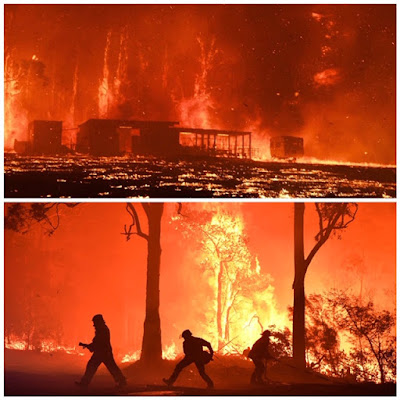But August saw around 200mm (average 90mm) rain dumped on us in a couple of rather intense bursts.
Our creek flooded a number of times but luckily the coastal lake that it flows into is currently open to the sea (not a common event) due to some heavy winter surf activity and the excess water did not hang about too long.
During the latest downpour the cattle were stranded on the wrong side for a while but eventually found their way across.
 |
| Our coastal lake. Sandbar cutting access to sea which is normal |
So we will have a good soil moisture content ready for the warmer temperatures to get the grass growing and the vines started.
We have already noticed bud swell and some bud burst in the early varieties.
Another feature of August was the number of frosts. We usually have 2 or 3. This year we had at least 8 and some were quite severe.
Australia experiences radiation hoar frosts rather than the advection type. We had the cold, clear, low humidity and still nights that are just right for such events.
As a result, pasture grass, especially in frost hollows, was 'burnt off' and we had to buy hay for the cattle to supplement their winter feed for a few weeks.
The results of our autumn weed (bracken) spraying program were very positive with a good 'kill' (a nice sea of brown) resulting.
A minor downside is that we have to decontaminate the sprayer very carefully as the herbicide we use for the bracken is very potent (application rate: 10g/100L) and any residue could harm the vines when our fungicide spraying starts.
This process involves multiple flushing, bleach additions and recirculation/agitation and then more flushing.
Wine wise we are still racking and monitoring sulphur levels of and oak influence on the reds. All three look good so far. With those and the planned blend we should see the four ready for consumption by the end of the year.
The white wine has proved very popular around the neighbourhood.





















No comments:
Post a Comment